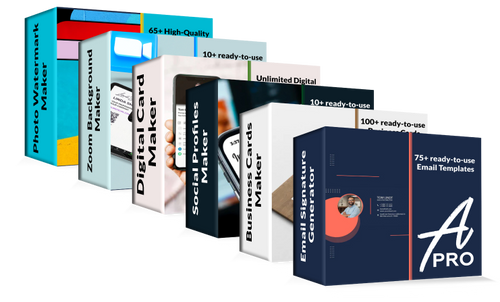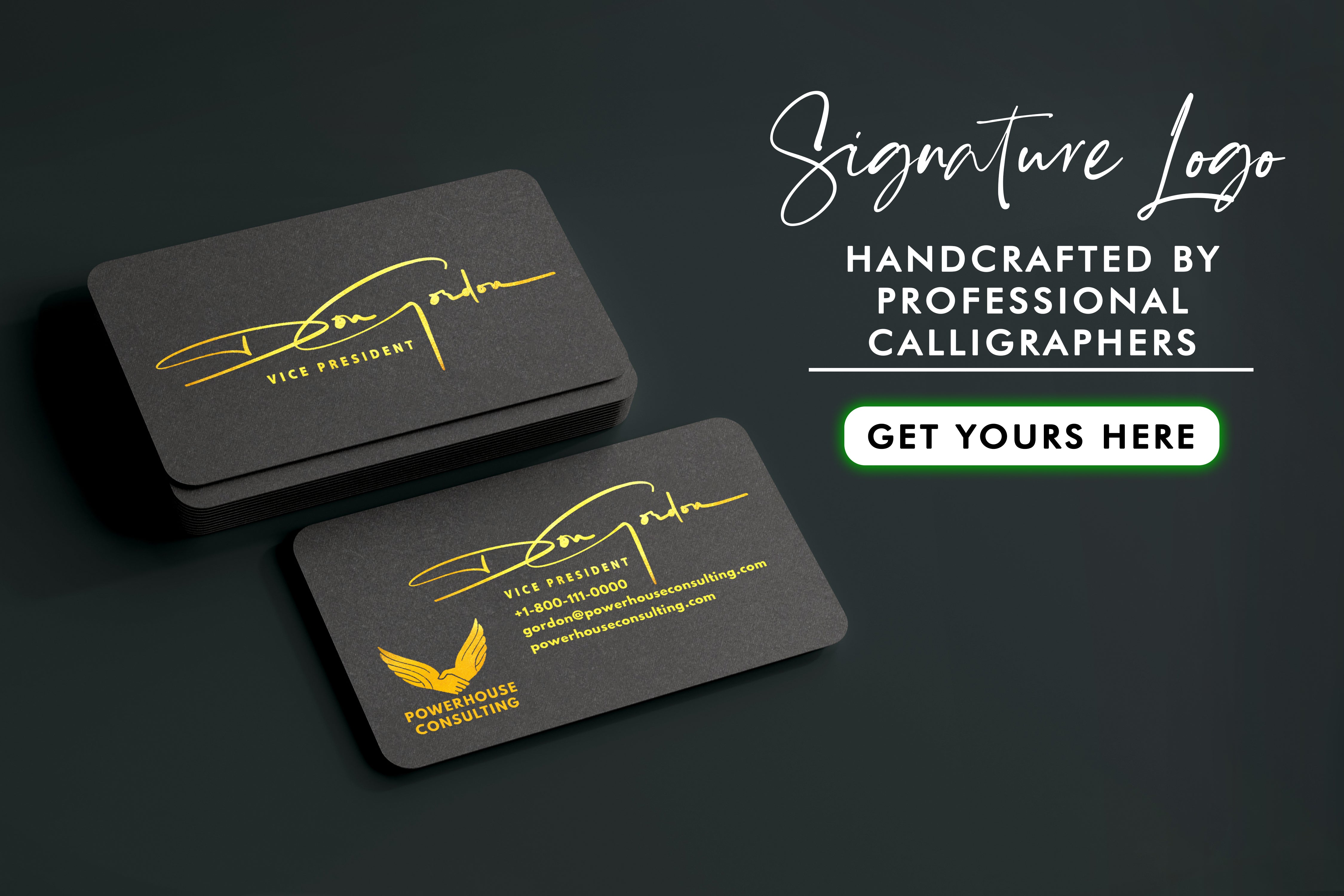A well-designed and properly-sized business card is vital for generating a lasting impression in the corporate world. However, with so many possibilities available, determining the correct size and dimension for your cards can be difficult. In this piece, we'll examine the pros and cons of using business cards of various sizes and shapes. If you're an entrepreneur, a small business owner, or a professional looking to step up your networking game, this guide will provide you the knowledge and insights you need to make an educated decision.
What Size Are Business Cards?
Business cards typically come in two standard sizes: 3.5 inches by 2 inches (8.9 cm by 5.1 cm) and 3.5 inches by 2.5 inches (8.9 cm by 6.4 cm). These margins are the most common dimensions and are widely accepted in the business world.
The standard 3.5-by-2-inch sizing is considered the most traditional and widely used. It fits perfectly into most cardholders and wallets, making it convenient for recipients to carry around. This size is also cost-effective, as it allows for multiple cards to be printed on a single sheet of paper, reducing printing costs.
On the other hand, the slightly larger 3.5 inches by 2.5 inches format offers more space for information and design elements. It can accommodate additional details such as social media handles, QR codes, or company slogans. While it may not fit as easily into cardholders or wallets, this size can make a bolder statement and stand out from the crowd.
In addition to these standard sizes, there are also other non-traditional options available. Mini business cards, measuring 3 inches by 1 inch (7.6 cm by 2.5 cm), are becoming increasingly popular for their uniqueness and compactness. Square business cards, measuring 2.5 inches by 2.5 inches (6.4 cm by 6.4 cm), offer a modern and sleek alternative to the traditional rectangular shape. These non-traditional layouts can help your business cards stand out and leave a lasting impression on recipients.
What Type Of Shape Should a Business Card Be?
When it comes to the shape of your business card, the most common and widely accepted option is the traditional rectangular shape. This shape is not only practical and easy to design, but it also fits easily into cardholders and wallets.
However, if you're looking to make a unique and creative statement, you may consider alternative shapes for your business cards. A rounded edge business card is one option that lends a touch of refinement and sophistication to your design. A die-cut business card is another choice, as it allows you to design distinctive forms that correspond to your brand or industry.
Square business cards are becoming increasingly popular due to their modern and sleek appearance. With their crisp corners and symmetrical appearance, square business cards can make your cards stand out from the crowd and leave a memorable impression.
What Type Of Finish Should a Business Card Be?
One of the most common finishes for business cards is a gloss or high-gloss finish. This finish coats the surface of the card with a shiny and reflecting coating, giving it a polished and professional appearance. Gloss coatings can enhance the vibrancy of colors and make design components stand out. This finish is often used on business cards in the real estate, marketing, and design industries.
Another popular option is a matte finish. A matte finish has a soft touch, smooth and non-reflective surface, giving your business cards a more sophisticated and elegant look. This finish is great for business cards in industries such as law, finance, and consulting, as it evokes a sense of professionalism and seriousness.
If you're looking for a more tactile and premium feel, you may consider a textured finish. Textured finishes can include options such as embossing, debossing, or letterpress. These finishes add depth and texture to your cards, making them visually and physically engaging. Textured finishes are often used for luxury brands or businesses that want to make a memorable impression.
How To Choose The Right Size for Your Business Cards
- Information:
Think about how much information you want to include on your business card. If you have a lot of details or want to showcase additional elements like social media handles or QR codes, a larger size may be more suitable. However, if you prefer a minimalist design with just the essential information, a standard size may be sufficient.
- Portability:
Consider how your recipients will carry and store your business cards. The standard 3.5 inches by 2 inches size is convenient and easily fits into most cardholders and wallets. It's also less likely to get damaged or bent. However, if you want your business card to make a statement and stand out, a larger or non-traditional size may be worth the trade-off in portability.
- Cost:
Printing costs can vary depending on the size of your business cards. The standard 3.5-by-2-inch size allows for multiple cards to be printed on a single sheet of paper, making it a cost-effective option. Larger or non-traditional sizes may require more expensive materials or specialized printing methods, which can increase the overall cost.
- Branding:
Consider how the size of your business cards aligns with your branding and image. A larger size may be more suitable for businesses that want to make a bold and memorable statement. On the other hand, a standard size may be more appropriate for a professional and conservative brand. Think about how the size of your business cards reflects your brand personality and values.
What Type Of Material Should a Business Card Be Made Of?
The material of your business card plays a significant role in its overall appearance and durability. Here are some common material options to consider:
Paper Stocks
This is the most commonly used material for business cards. It affordable, and can be easily printed on. Paper stocks also allows for various finishes, such as matte or glossy.
Recycled Paper
If you want to convey an eco-friendly message or align with sustainable practices, consider using recycled paper for your business cards. It has a natural texture and can add a unique touch to your cards.
Plastic
Plastic business cards are durable and waterproof, making them suitable for industries like construction or outdoor services. They can also be transparent or frosted for a modern and sleek look.
Metal
Metal business cards convey sophistication and grandeur. They are frequently utilized by elite companies and businesspeople in fields like banking and real estate. Metal cards are available in stainless steel, brass, and aluminum.
Wood
For a rustic or natural look, wooden business cards are a great choice. They can be laser-engraved or printed on, allowing for customization while maintaining a unique and organic feel.
Conclusion
In conclusion, understanding the size and dimensions of business cards is crucial for creating a memorable and impactful networking tool. While there are various options available, the regular business card size remains a popular choice for its simplicity and compatibility with cardholders and wallets. However, it is important to consider your industry, target audience, and personal branding when selecting the perfect size for your business cards. Remember, in the world of business, size does matter, and getting it right can make all the difference in leaving a professional and memorable impression.
Final Thoughts
Make a lasting impression with Artlogo's expertise in crafting the finest handwritten signatures, logos, and business cards. Whether you're a freelancer, small business owner, or part of a large corporation, our personalized touch will leave a lasting impact wherever you go. Experience the difference with Artlogo.
Sources
























Share to: